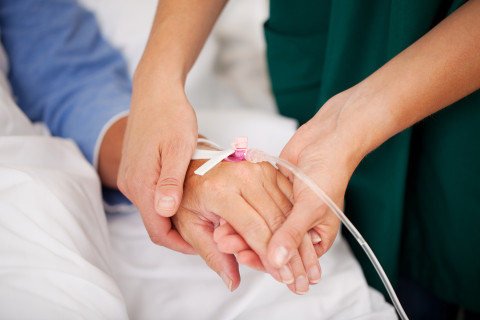The PhD study of Mari Liukka, MHSc, aimed to describe the level of and differences in the patient safety culture in acute and long-term care and to clarify how patient safety incident reports are analysed and what kind of developments have been proposed based on reports. A further purpose was to explain how an adverse event affects those involved in the event and the role of managers after an adverse event.
The thesis is based on four sub-studies. In sub-studies I, II and III, data were collected at one integrated Finnish healthcare organisation. In cross-sectional sub-study I, the data were collected in 2016 from health care professionals in long-term care (n=196, wards and nursing homes) and acute care (n=168) using the Hospital Survey on Patient Safety Culture questionnaire. The data were analysed statistically using the Kruskall-Wallis test and Mann-Whitney U-test. Data (n=3755) from the organisations’ incident reporting system HaiPro were also used to determine the number of reported patient safety incidents. In registered-based sub-study II, data were collected from the HaiPro database (years 2011–2015, n=16019) and trends in patient safety incident repots were analysed statistically. Quantitative statistics are presented as percentages and frequencies. In qualitative sub-study III, nursing managers (n=11) were interviewed in 2013-2014 using a semi-structured format. The data were analysed using inductive content analyses. Sub-study IV was an integrative literature review (years 2009–2018), looking at 25 articles focusing on action after adverse events in health care organisations.
According to the findings, acute care professionals had more positive views on the patient safety culture than long-term care professionals. Managers’ perceptions were most positive in many dimensions and practical nurses’ perceptions were most negative. In HaiPro healthcare professionals had made 3,755 incident reports in 2016, many of the incident reports (75%) deriving from long-term care. Professionals report patient safety incidents more and more every year, but at the same time, written recommendations for developing action to avoid patient safety incidents happening again has decreased. When an adverse event occurs, four themes emerged in nursing managers’ action: patient-centeredness as a principle for common action; courage to reform operational models to prevent future adverse events; encouragement of nursing staff’s open and blame-free discussion; and the challenge to recognise adverse events. Three types of victim were identified in literature after an adverse event: first victims (patients and their families); second victims (healthcare professionals); and third victims (healthcare organisation). Communication, support types, coping strategies, learning and apology were linked differently to these victim types. Comprehensive models for action after adverse events are insufficient.
Managers receive a significant number of incident reports and this number increases every year. For more effective recovery, there should be a definition of what kinds of event should be reported, a definition of the severity of the events on which managers have to make a development recommendation, and control to ensure that the recommendations are implemented. Disclosing processes and comprehensive action after adverse events should be developed and implemented.
The doctoral dissertation of Mari Liukka, Master of Health Sciences, entitled Patient safety-related adverse events – Perspectives of health care professionals will be examined at the Faculty of Health Sciences. The Opponent in the public examination will be Professor Riitta Suhonen of the University of Turku, and the Custos will be Professor Hannele Turunen of the University of Eastern Finland. The public examination will be held in Finnish online on 18 June 2021, starting at 12 noon.
Public examination online (in Finnish)



